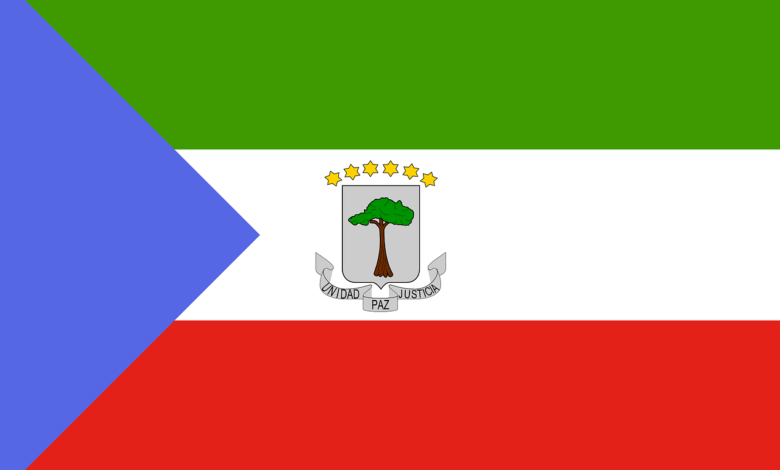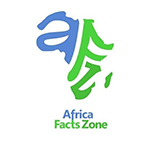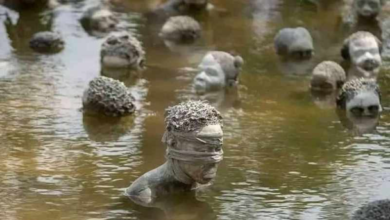Guinea Facts, History, Culture & Travel – Africa Facts Zone
A Nation of Rich Resources and Diverse Cultures

Guinea, often overshadowed by its West African neighbours, is a country of immense natural wealth and cultural diversity. Known for its rich mineral resources, particularly bauxite, Guinea has played a significant role in the global economy.
Beyond its resources, Guinea boasts a rich cultural heritage. Over two dozen ethnic groups contribute to the country’s vibrant traditions.
In this article, we will explore Guinea’s history, geography, culture, and economy, offering a comprehensive look at this intriguing nation.
Historical Overview: From Ancient Empires to Modern Statehood
The Mali and Songhai Empires
Guinea’s history is deeply intertwined with the great empires of West Africa, particularly the Mali and Songhai Empires.
These empires were known for their wealth, advanced governance, and cultural achievements. The region that is now Guinea was a key part of these empires, with cities like Niani serving as important centres of trade and learning.
Colonial Era and the French Influence
In the 19th century, Guinea became part of the French colonial empire. The French established Conakry as the capital and began exploiting the country’s natural resources, particularly its vast bauxite reserves.
Unlike many other African countries, Guinea’s path to independence was marked by a bold move in 1958. Under the leadership of Ahmed Sékou Touré, the country voted to leave the French Community, becoming the first French colony in Africa to gain independence.
Also Read: Exploring Eritrea Facts, History, Culture & Travel – Africa Facts Zone
Post-Independence Challenges
After gaining independence, Guinea faced significant challenges under the authoritarian rule of Sékou Touré, whose policies led to economic decline and political repression.
Following Touré’s death in 1984, Guinea experienced a series of military coups and political instability. However, recent years have seen efforts to stabilize the country and promote democratic governance.
Geography: From Mountains to Coastlines
Diverse Landscapes
Guinea is a country of diverse landscapes, ranging from the Fouta Djallon highlands in the north to the coastal plains along the Atlantic Ocean.
The Fouta Djallon is often referred to as the “water tower of West Africa” because it is the source of several major rivers, including the Niger, Senegal, and Gambia rivers.
The country also has a rich biodiversity, with rainforests, savannahs, and mangroves providing habitats for a variety of wildlife.
Climate
Guinea has a tropical climate, with a wet season from May to October and a dry season from November to April. The coastal regions tend to be more humid, while the interior experiences a drier, more temperate climate.
Cultural Heritage: A Mosaic of Ethnicities and Traditions
Ethnic Groups
Guinea is home to more than 24 ethnic groups, each with its own language, traditions, and customs. The largest ethnic group is the Fulani (Peul), followed by the Malinke (Mandingo) and the Soussou.
Despite this diversity, there is a strong sense of national unity, with different groups coexisting peacefully and contributing to the country’s cultural richness.
Languages
French is the official language of Guinea, a legacy of its colonial past. However, many Guineans are multilingual, speaking their ethnic group’s language in addition to French.
Pulaar (spoken by the Fulani), Malinke, and Soussou are among the most widely spoken local languages.
Religion
Islam is the dominant religion in Guinea, practised by about 85% of the population. The majority of Guinean Muslims are Sunnis, following the Maliki school of thought. Christianity and traditional African religions are also practised, and religious tolerance is a notable feature of Guinean society.
Music and Dance
Guinean music is renowned for its rhythmic complexity and cultural significance. The djembe, a traditional drum, is perhaps the most famous instrument associated with Guinea, and it is used in various ceremonies and celebrations.
Dance is also an important part of Guinean culture, with different ethnic groups having their own distinctive dance styles.
Economic Potential and Challenges
Mining and Natural Resources
Guinea is one of the world’s leading producers of bauxite, the primary ore used in aluminium production. The country also has significant deposits of iron ore, gold, diamonds, and uranium.
The mining sector is the backbone of Guinea’s economy, accounting for a substantial portion of the country’s GDP and export earnings.
However, the sector faces challenges such as inadequate infrastructure, political instability, and fluctuating global commodity prices.
Also Read: Exploring Equatorial Guinea Facts, History, Culture & Travel – Africa Facts Zone
Agriculture
Agriculture is another key sector of the Guinean economy, employing a large portion of the population. The country’s fertile land supports the cultivation of rice, cassava, maize, and coffee. Livestock farming and fishing are also important sources of livelihood, particularly in rural areas.
Developmental Challenges
Despite its natural wealth, Guinea faces significant developmental challenges, including poverty, unemployment, and a lack of infrastructure.
The government has been working to attract foreign investment and diversify the economy to reduce dependence on mining and promote sustainable development.
Conclusion
Guinea is a nation of contrasts, with immense natural wealth and a complex cultural landscape. From its ancient ties to powerful empires to its modern struggles and aspirations, Guinea offers a fascinating glimpse into the history and future of West Africa.
As the country continues to navigate its path to development, it remains a vital part of the region’s economic and cultural fabric.
Frequently Asked Questions (FAQs)
1. What is the significance of Guinea’s bauxite reserves?
Guinea has some of the world’s largest bauxite reserves, making it a key player in the global aluminium industry.
2. When did Guinea gain independence from France?
Guinea gained independence from France on October 2, 1958, becoming the first French colony in Africa to do so.
3. What are the main languages spoken in Guinea?
French is the official language, but local languages such as Pulaar, Malinke, and Soussou are widely spoken.
4. What role does agriculture play in Guinea’s economy?
Agriculture is a key sector in Guinea. It employs a large portion of the population and produces crops such as rice, cassava, maize, and coffee.
5. How is Guinea addressing its developmental challenges?
The government is working to attract foreign investment, improve infrastructure, and diversify the economy to promote sustainable development.
6. What is the cultural significance of the djembe in Guinea?
The djembe is a traditional drum that plays a central role in Guinean music and culture, used in various ceremonies and celebrations.
7. How does Guinea’s climate vary across the country?
Guinea has a tropical climate with a wet season from May to October and a dry season from November to April. The coastal regions are more humid, while the interior is drier.





